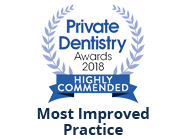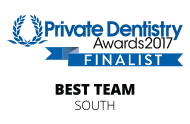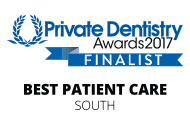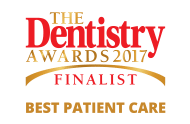
Dr Viren Patel
BDS, MFDS RCSEd, PG Dip Orth
General Private Dentist & Orthodontics
GDC 244322
Viren Graduated from The University of Birmingham in 2013 and has since worked in a family friendly dental practice with growing popularity from his patients. His caring and analytic approach to patient care is indicative of the modern and progressive outlook in dentistry, which is why his main focus is on prevention and patient education.
His motto is “To achieve the best patient outcome in the most minimally invasive way possible”
Viren appreciates the importance of keeping his skills current for the benefit of his patients and thus attends numerous courses every year in order to expand and advance his clinical skills. He also successfully passed postgraduate examinations through the Royal College of Surgeons of England and Edinburgh and obtained a Membership of the Faculty of Dental Surgery through the Royal College of Surgeons of Edinburgh in 2014.
In 2020, he started his Diploma in Orthodontics, which is a field of dentistry he has always had a passion for since his time as a dental student. He successfully passed his examinations in 2022, with a joint top distinction award. He has experience in treating the full range of malocclusions, no matter how simple or complex, using a variety of machanics including fixed metal braces, tooth-coloured braces, lingual braces, removable braces, functional braces, clear aligners (Invisalign), and mini-screws.
Cosmetics is integrated into every aspect of dentistry. He is an accredited provider of a range of cosmetic orthodontic treatments including Invisalign Go, C-Fast braces and SmileTru clear aligners.
Viren also enjoys the surgical aspect of dentistry. To pursue this surgical path, in 2014, he undertook a Dental Implant Course at Harley Street, London, which is accredited by Stony Brook University in New York, USA.
Viren is a huge sports fan and particularly enjoys playing cricket and football, and watching Formula 1 and NFL. He enjoys gaming on his Playstation in his spare time which shows there is still a little boy hidden within him. That is, if he is not travelling across the world.
- Aesthetic (ceramic, sapphire) and metallic braces
- Invisible aligners- Invisalign
- Lingual braces- Incognito
- Adult and children orthodontics
What is orthodontics?
Orthodontics is the branch of dentistry related to the correction of problems with the position of the teeth and jaws and their effects on facial harmony. According to the British Orthodontic Society, over 1 million people in the UK started having orthodontic treatment last year, so if you may be about to have a brace, you’re in good company!
Why might orthodontic
treatment be needed?
There are many reasons why orthodontic treatment could be recommended. The most common reasons are:
- Increased overjet – upper teeth appear to stick out. Prominent teeth are significantly more likely to suffer damage through trauma than normally positioned front teeth.
- Crooked teeth – this is usually because one of both sets of teeth are crowded, due to there being not enough room in the jaw for the teeth to line up properly. Some people think they have “too many teeth”. This can very occasionally happen, but is not the usual cause of crowding. Crooked teeth are more difficult to easily keep clean.
- Bite problems – sometimes the overlap of the front teeth may be excessive (deep overbite) and there may be trauma to the gums or the teeth. At the other extreme there may be no overlap at all (open bite). Sometimes the upper teeth bite behind the lower teeth. This is called a reverse overjet. These problems can affect speech and the ability to bite through food.
- Impacted teeth – second teeth, particularly the upper canines sometimes fail to come through.This can lead to serious damage to the roots of neighbouring teeth.
- Missing teeth – if teeth fail to develop the rest of the teeth may come through in the wrong positions resulting in a poor bite. The teeth may need to be uprighted and moved together, or repositioned to allow for easier provision of replacement teeth
When is the best time to be seen?
Your dentist may make a referral for an orthodontic opinion at any stage. We will accept self-referrals, but only on a private basis. Ideally, a consultation at the age of 8-9 will give the orthodontist the opportunity to assess a child and to offer some advice. Frequently, this advice will be to wait and review tooth development at an older age.
Occasionally, a problem can be picked up and treated early relatively easily, reducing the need for more complex treatment later on. Most types of treatment are best provided when a child is actively growing and therefore it is important to realize that you should not necessarily wait until all the baby teeth have fallen out before seeking an orthodontic opinion.
Depending on the amount of dental development and the problems involved, treatment is usually provided from the age of 10-12 onwards.
What are the types of treatment?
Treatment will involve some form of brace. The most commonly used are:
Fixed braces
Fixed braces, or ‘train tracks’, consist of small attachments (brackets) that are glued onto the teeth and joined together by wires which help move the teeth into their correct places. The wires are usually held in place by tiny elastic rings (modules) which can be of different colours
Some brackets have clips that hold the wire in place without the need for plastic rings and allow the teeth to move more quickly. Brackets can be made from metal or can be more aesthetic by being clear or tooth-coloured.
Removable braces
These consist of a plastic base plate with wires attached that hold the brace in place and/or move the teeth. These are usually restricted to correcting simple problems or may be used prior to treatment with a fixed brace.
Functional appliances
These are a type of removable brace which fit over both the upper and the lower teeth. One commonly used type is called the Twin Block. This is actually 2 removable braces that work together to try to modify the growth and development of the jaws and teeth and to alter the way in which the teeth meet together. They are commonly used when there is a problem with prominent top front teeth.
Retainers
At the end of treatment, when the teeth are all straight, retainers are provided to help keep them that way. These can be removable or can be fixed behind the teeth. Fixed retainers are a permanent fixture. Removable retainers only work if they are worn! We will advise how much they should be worn. This is a very important phase of treatment as without retainers the teeth are likely to move back (relapse) towards their original positions. The teeth never ‘set’ in the bone and can move again at any time. Retainers should be considered a long-term commitment if you want to keep your teeth straight your whole life.
Other braces you may encounter
Some removable brace systems use a series of clear plastic positioners to straighten teeth. These may be suitable for older teenagers or adults not wanting traditional braces but they are unlikely to treat complex problems.
Braces can be placed on the tongue side of the teeth (lingual braces).
Sometimes we may recommend the use of headgear for nights-only wear to help with various tooth movements either during or before treatment with a fixed brace.
Risks and benefits of treatment
The major risk of fixed brace treatment is that the teeth can suffer decay and discolouration around the braces if the teeth are not kept clean. Unsightly white or brown marks will occur around the braces if plaque is not removed. Unfortunately these marks are usually only noticed when the braces come off and they are permanent. Thorough tooth and brace cleaning coupled with a low-sugar diet and minimal intake of acidic drinks will minimize the risk. Plaque on the teeth will also lead to swollen, bleeding gums and bad breath! We will remove the braces early if we fear that tooth damage is occurring.
When braces are first fitted they usually make the teeth and mouth sore. Ulcers may occur. Biting hard food is difficult and painful so a soft-food diet must be adopted. Hard or sticky foods can damage the braces and must be avoided. Repeated damage to the braces may lead to treatment being abandoned and the braces removed.
Root resorption, shortening of the roots of the teeth, can occur during treatment. This is rarely significant. There are some risk factors, such as previous trauma to the teeth, nailbiting and thumbsucking, that can increase the chance of significant root resorption and consequently loose teeth. Nail biting and thumb sucking must stop during treatment. Tongue piercings must also be removed during treatment.
Overcrowded or prominent teeth can often only be corrected if some teeth are extracted. Orthodontic treatment does take time and a course of treatment may last anything from 6 months to a couple of years, or even longer. Regular visits, usually every 6-8 weeks are required to adjust the brace during treatment. If you are not certain that you can commit to these regular visits and to having braces on your teeth for this length of time, discuss this with us as it will be better not to start treatment at this time.
Relapse of the teeth back towards their original positions if retainers are not worn is likely. The benefits of orthodontic treatment are hopefully obvious! Everyone likes an attractive smile, and having a great smile should boost your self-confidence! It may also be easier to keep your teeth clean when they are straight and an improved bite will also be an advantage.
Conclusion
There are many reasons to seek orthodontic advice and an early visit may help highlight a developing problem. Different situations require different braces, but in all cases we need a patient who is committed to regular visits, to looking after their brace and to keeping it clean.
Your smile is an invaluable asset: orthodontics can help make the most of it.
Useful links:
www.bos.org.uk – British Orthodontic Society. Information on all aspects of orthodontics and orthodontic provision.
www.dentalhealth.org.uk – British Dental Health Foundation. General information on all aspects of dental treatment, including orthodontics.















